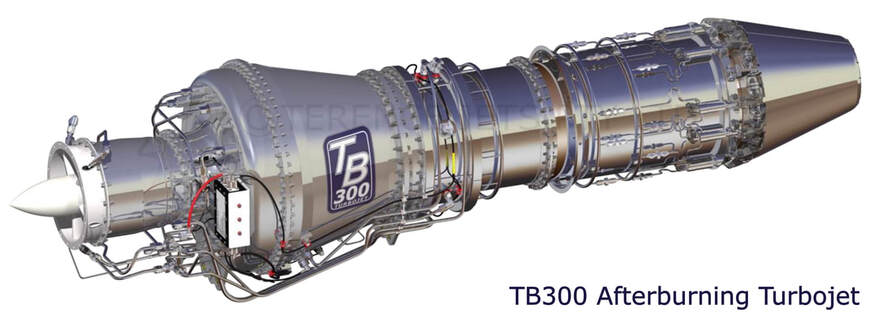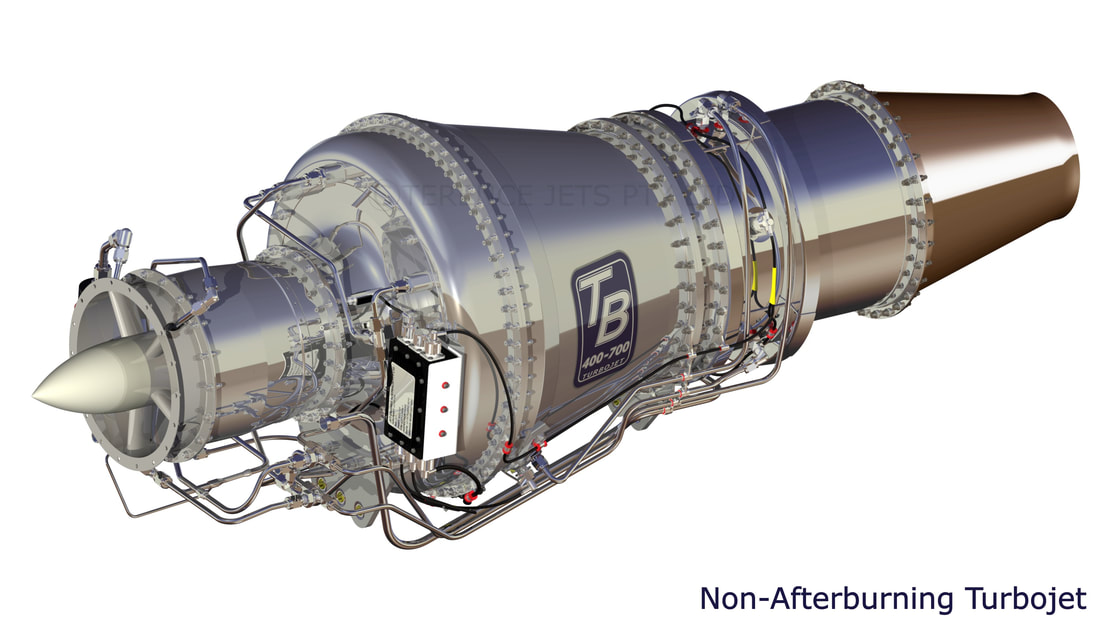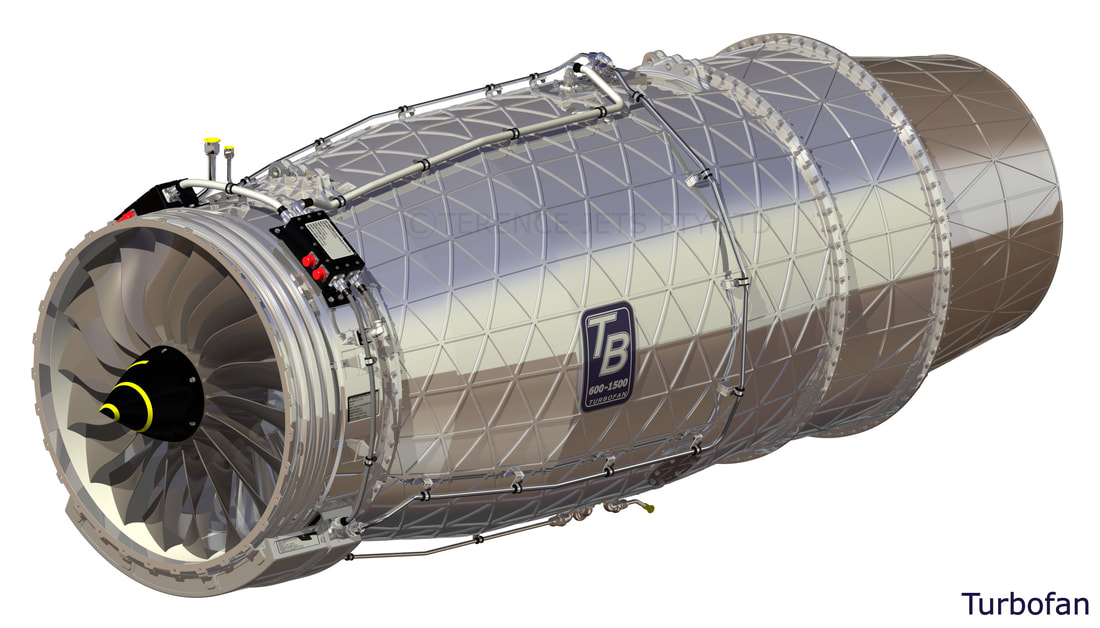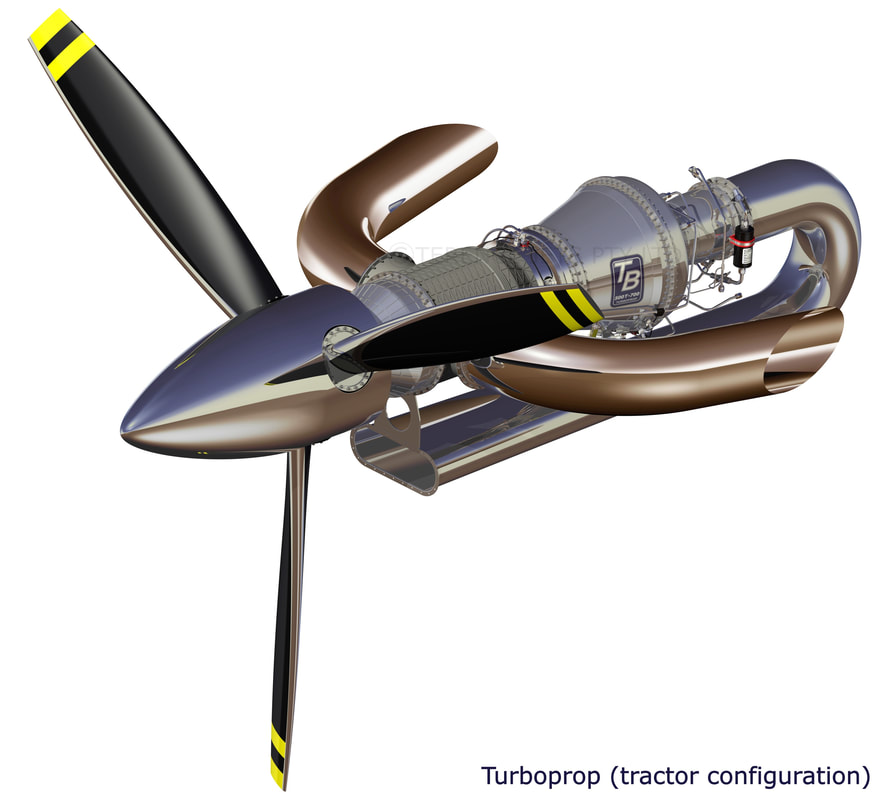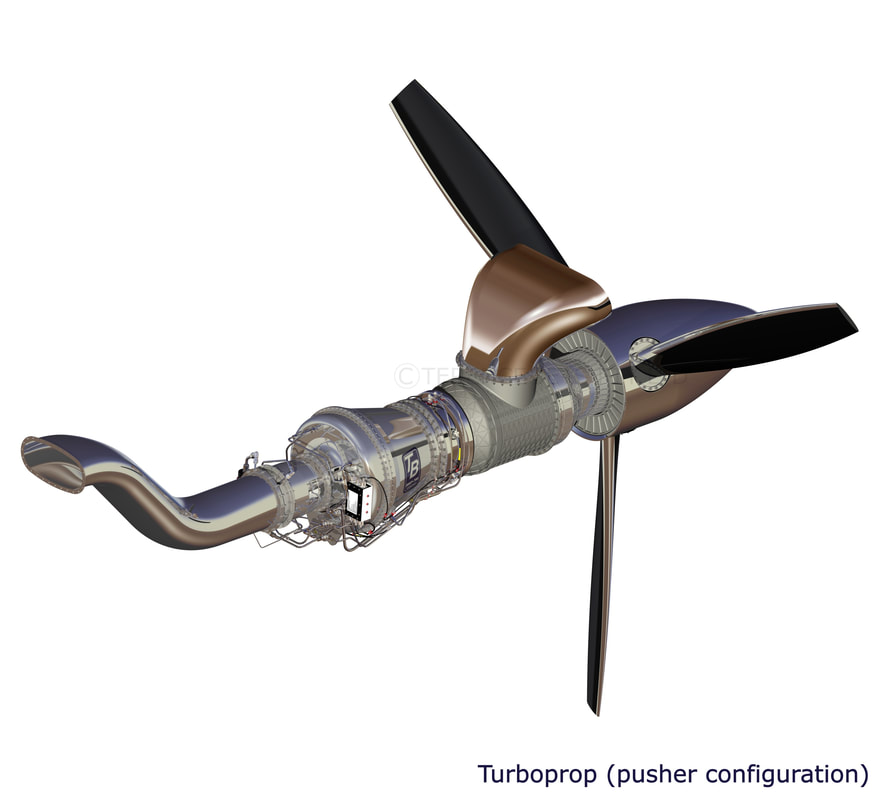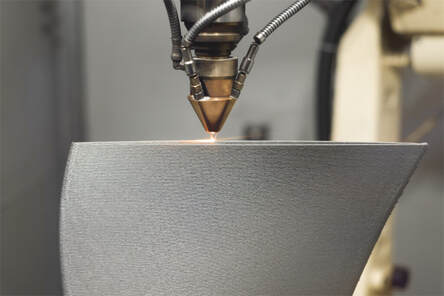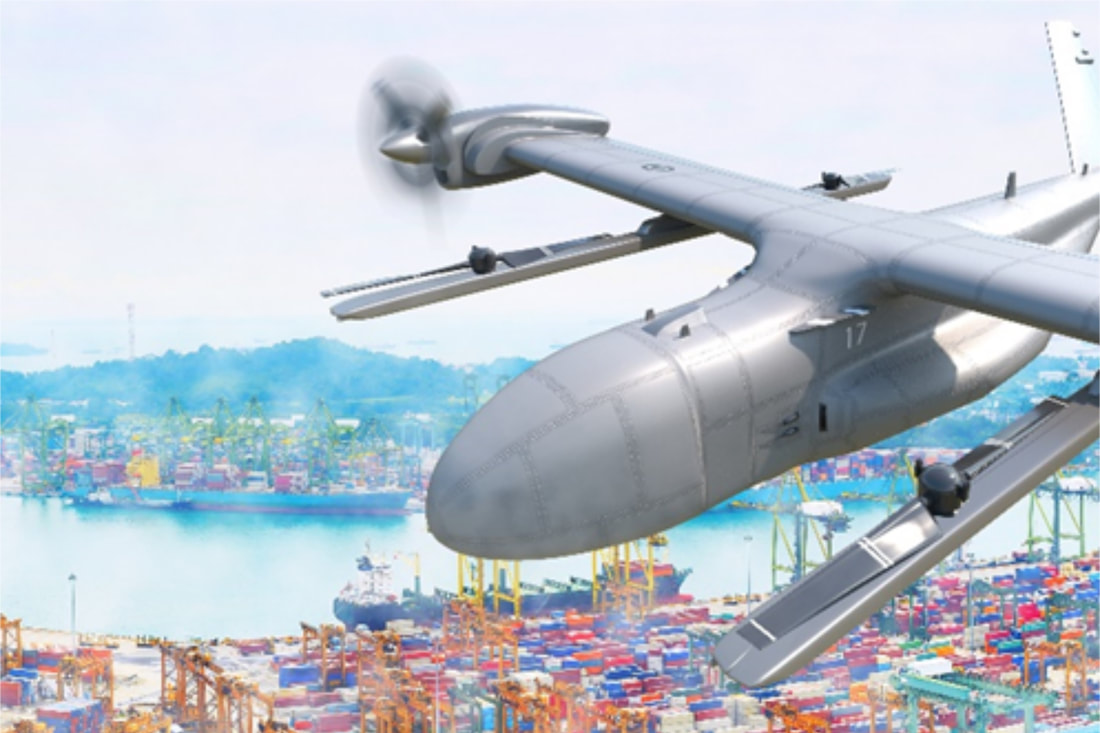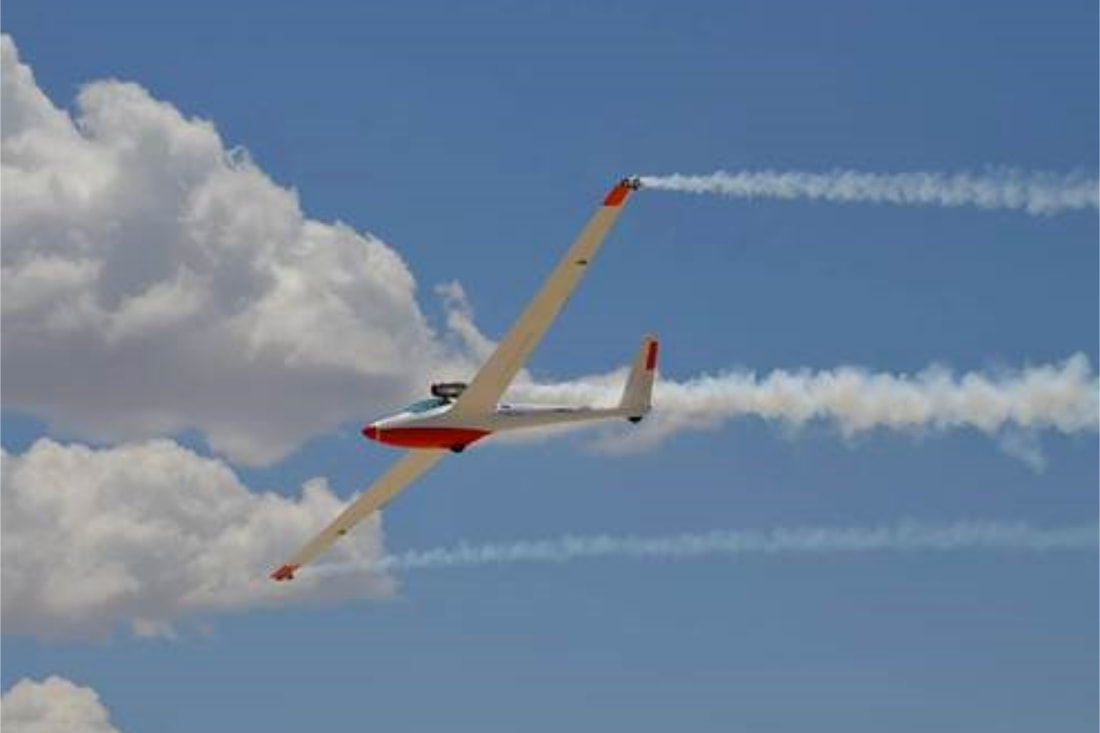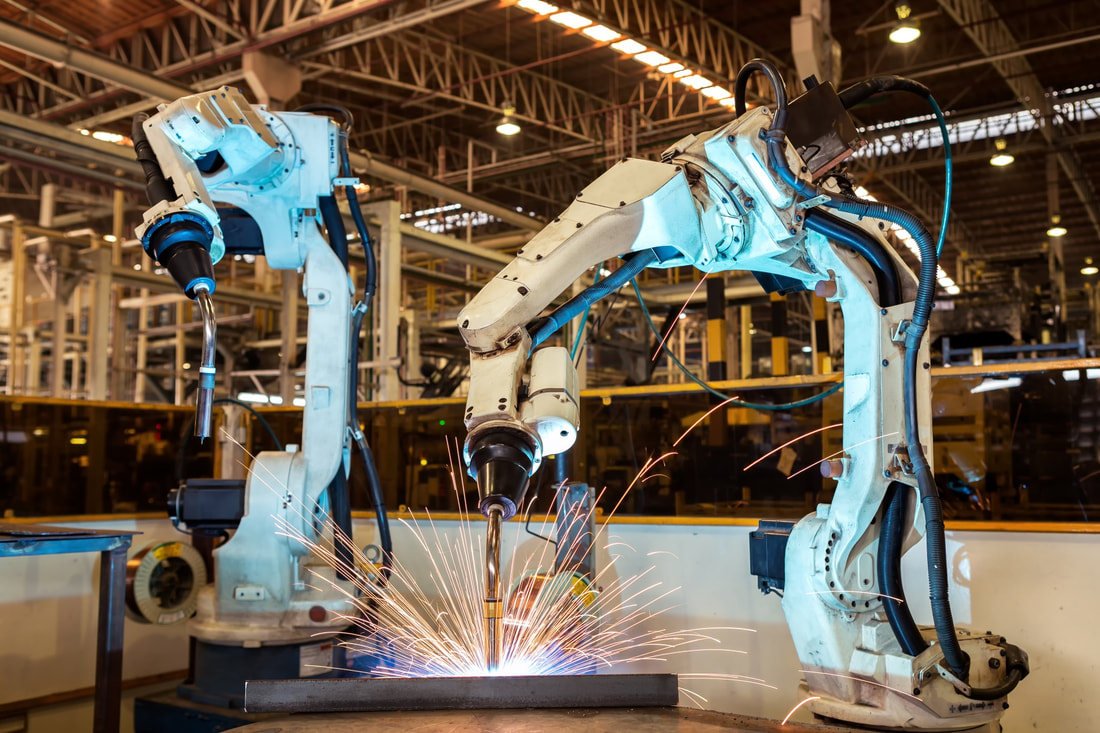Propulsion.The powerplant for the UJ1672A, the TB300 afterburning turbojet, can be modified into a non-afterburning turbojet, turbofan, turboprop and turboshaft engine making it suitable for unmanned aerial vehicles, very light jet aircraft, powered gliders and for research & development.
|
Non-Afterburner Turbojet, Turbofan, Turboprop and Turboshaft Engines
Non-afterburning turbojet, turbofan, turboprop and turboshaft engines use a core rotating assembly architecture that is similar to an afterburning turbojet engine. Terence Jets is able to modify its TB300 afterburning turbojet into a non-afterburning turbojet by removal of the afterburner and into a turbofan, turboprop and turboshaft by the removal of the afterburner and the addition of a gearbox. The non-afterburning turbojet is suitable for high speed subsonic and transonic aircraft, the turbofan for high speed subsonic aircraft and turboprop for low to medium subsonic aircraft while the turboshaft is suitable for helicopters. The combined turbofan, turboprop and turboshaft market is currently valued at US$3.5 billion and is expected to grow in the near future.
The TB300 with its modern low-complexity rotor architecture can be converted into other engine configurations
Terence Jets engines use the latest in 3D printing manufacturing allowing a quick-time-to-market
Unmanned Aerial Vehicles
|
The military unmanned aerial vehicle (UAV) market that includes target-drones, anti-drones, loyal wingman aircraft and high speed missiles is growing at an increasing rate. Further contributing to the market growth is the use of UAV’s in commercial applications such as monitoring, surveying, precision agriculture and product delivery.
The propulsion market for these UAV’s has experienced a high-rate of growth over the last 10 years due to this increasing demand of UAV usage and with the incorporation of 3D printing, these UAV powerplants can be manufactured in reduced time frames compared to traditional jet engine manufacturing. The UAV market is currently valued at US$20 billion and is expected to grow to US$50 billion by 2025. |
The unmanned aerial vehicle market is growing at an ever increasing rate with a variety of engine types required including non-afterburning turbojets, turbofans, turboprops and turboshafts. |
Very Light Jet and Powered Glider Aircraft
|
The light aircraft market in which very light jets and powered gliders reside is valued at US$7 billion and is expected to grow to US$13 billion by 2030. Factors expected to fuel the growth include the increasing demand for recreational flights, chartered flights, air taxi and urban air mobility. The trend is highly evident in developed economies, wherein funds raised by technology developers are driving the growth of this market.
|
Research and Development
|
With the ever increasing demand on military and commercial jet engine manufacturers to reduce development time and to provide lighter, reduced part-count, fuel efficient and less expensive jet engines, then R&D is of paramount importance. Current R&D is performed by the main engine manufacturers, universities and technology organisations around the world. Typical spending on research and development by the main commercial engine manufacturers is approximately USD$6 billion annually.
|

